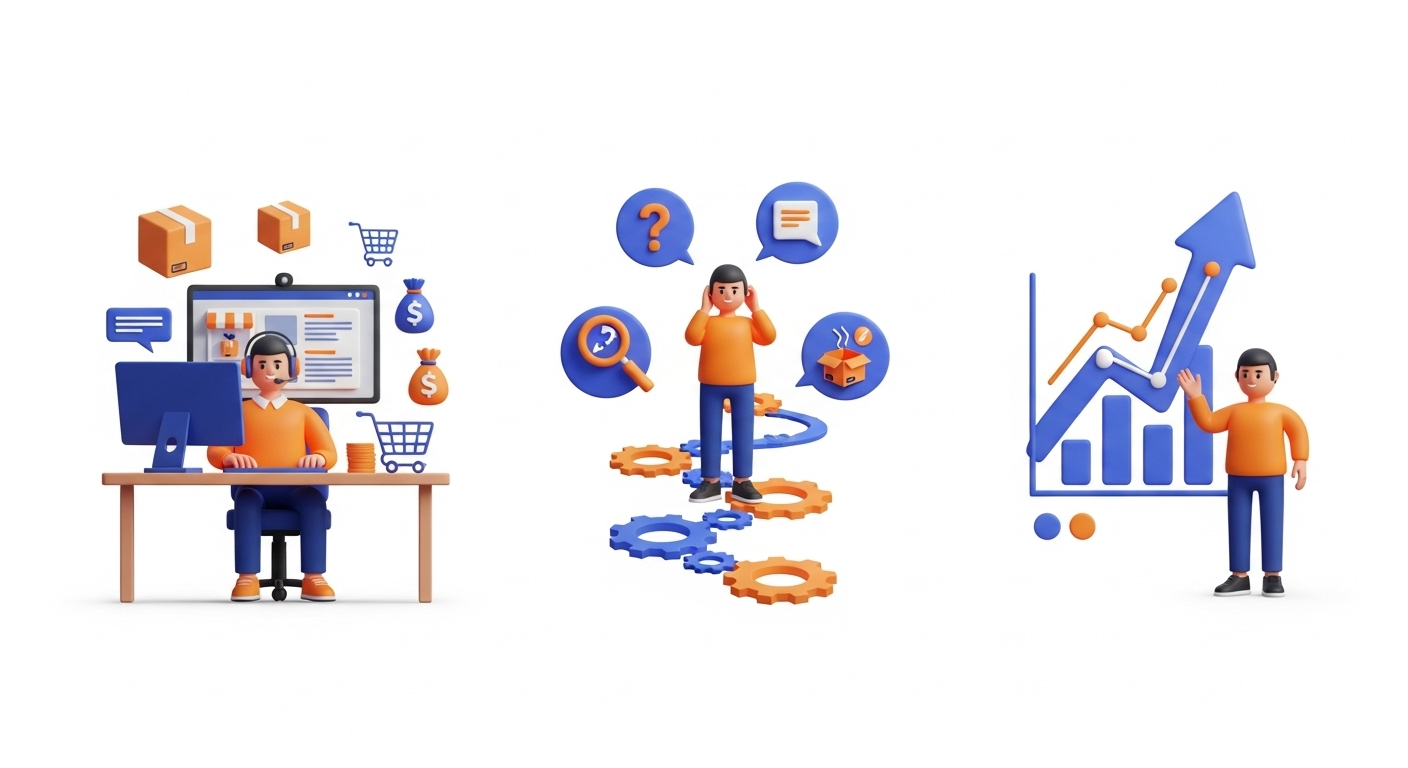
When preparing for an ecommerce migration, choosing the right platform is one of the most important decisions you'll make. Should you go with Magento (now Adobe Commerce) or Shopify?
Both platforms dominate the eCommerce landscape in 2025, but they’re built for very different use cases. This Magento vs Shopify comparison will help you decide which platform aligns best with your business goals — before you commit to migrating your online store.
1. Ease of Use
-
Shopify: Built for simplicity. Its interface is intuitive, beginner-friendly, and requires no coding — ideal for non-technical store owners.
-
Magento: Powerful but complex. Great for businesses with developers or an IT team.
✅ Choose Shopify if you want to launch quickly and manage your store without technical headaches — especially after a Shopify migration from platforms like WooCommerce or PrestaShop.
2. Customization and Flexibility
-
Magento (especially Open Source) gives you full control over design, backend logic, and third-party integrations.
-
Shopify uses themes and apps. You can get more flexibility on Shopify Plus, but you won’t match Magento’s open-code environment.
✅ Choose Magento if deep customization, unique checkout logic, or advanced product relationships are important for your ecommerce strategy.
3. Cost Structure
| Platform | Pricing Model |
|---|---|
| Shopify | Subscription model ($39–$399+/mo) + transaction fees |
| Magento | Free (Open Source), but hosting, dev, and maintenance add up. Adobe Commerce is enterprise-priced |
✅ Shopify = fixed, predictable monthly pricing
✅ Magento = higher upfront investment, but long-term control and flexibility
4. Scalability
-
Magento shines in enterprise ecommerce — supporting large catalogs, B2B portals, complex pricing, and multi-store architecture.
-
Shopify scales well with Shopify Plus, but can become restrictive for custom or multinational setups.
✅ Choose Magento for enterprise scalability and global expansion.
✅ Choose Shopify Plus for high-growth D2C brands with fewer customization needs.
5. App & Extension Ecosystem
-
Shopify has thousands of plug-and-play apps in its App Store, most of which are easy to install and beginner-friendly.
-
Magento offers powerful extensions, but they often require developer setup and may need updates during platform upgrades.
✅ Shopify apps are easier to manage for non-technical users
✅ Magento extensions offer deeper customization for complex stores
6. Migration Planning & Tools
Migrating your store from platforms like WooCommerce, Wix, BigCommerce, or PrestaShop? Here’s how they compare for ecommerce data migration:
-
Shopify: Supports smooth transitions via native import tools or third-party services like Cart2Cart. You can migrate to Shopify without downtime or data loss.
-
Magento: Migration is more technical. You’ll likely need a developer or an expert agency for a successful Magento migration.
✅ Shopify migration is faster and less risky
✅ Magento migration gives more control — but comes with complexity
Magento vs Shopify – Quick Comparison Table
| Feature | Magento | Shopify |
|---|---|---|
| Ease of Use | ❌ Complex | ✅ Beginner-friendly |
| Customization | ✅ Unlimited (open) | ⚠️ Limited (Plus helps) |
| Hosting & Security | ❌ Self-managed | ✅ Included |
| App Ecosystem | ✅ Deep but tech-heavy | ✅ Plug-and-play |
| Scalability | ✅ Enterprise-ready | ⚠️ Good (Plus improves) |
| Cost Predictability | ❌ Varies widely | ✅ Fixed monthly |
| Migration Simplicity | ⚠️ Devs usually needed | ✅ Cart2Cart & tools available |
Final Verdict: Shopify or Magento in 2025?
Choose Shopify if you:
-
Want a fast, low-maintenance store
-
Don’t have an in-house development team
-
Want to migrate easily using tools like Cart2Cart
-
Prefer predictable monthly pricing
-
Sell D2C and need multichannel features (TikTok, Instagram, Amazon)
Choose Magento if you:
-
Run a large, complex, or B2B operation
-
Require advanced customization and backend logic
-
Plan to manage multiple storefronts or languages
-
Have access to developers or an IT partner
-
Need enterprise-level integrations (ERP, PIM, etc.)
Expert Tip: Use Cart2Cart for Seamless Migration
No matter your choice, make sure your ecommerce migration is handled with precision. Tools like Cart2Cart allow you to:
-
Transfer products, images, orders, customers, and SEO data
-
Perform a free demo migration
-
Avoid downtime or data loss during the switch
-
Migrate between any major platforms — Shopify, Magento, WooCommerce, BigCommerce, Wix, PrestaShop, and more
Start your free demo migration with Cart2Cart now
Monthly Update – December 2025
As 2025 draws to a close, the focus for many online retailers is on optimizing their digital infrastructure for the coming year. A key insight for any migration, whether to Shopify or Magento, is the paramount importance of data integrity and SEO preservation. With advanced analytics and AI-driven personalization becoming standard, inaccurate data transfer can severely impact customer segmentation, recommendation engines, and overall marketing effectiveness. Businesses must ensure that product attributes, customer histories, and especially SEO elements like redirects and meta data are meticulously handled during the transition.
Furthermore, the ability to scale and integrate with a diverse ecosystem of tools is more critical than ever. Merchants are not just looking for a new platform but a comprehensive solution that supports their entire tech stack – from ERPs to CRM and marketing automation. For Magento, this means leveraging its robust API capabilities for deep integrations. For Shopify, the focus is on selecting apps that offer seamless data synchronization. Regardless of your chosen platform, a thorough pre-migration audit and a proven migration strategy are essential to safeguard your valuable data and maintain your search engine visibility. Don't let a poorly executed migration undermine your future growth plans.
For more details, explore our FAQ section or schedule a call with a migration expert.





